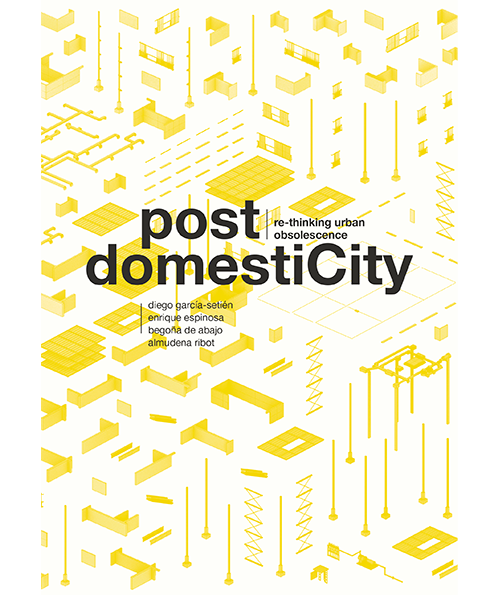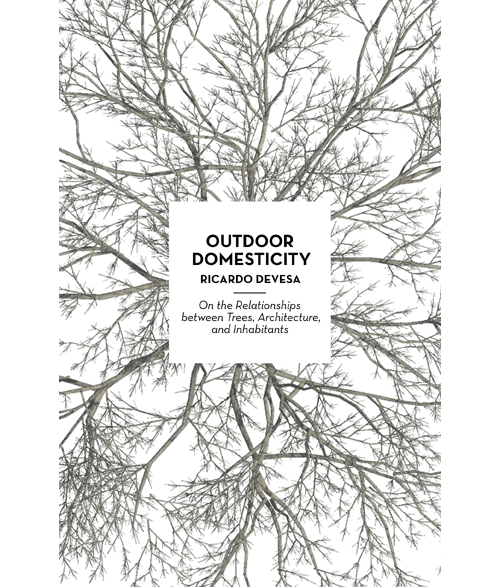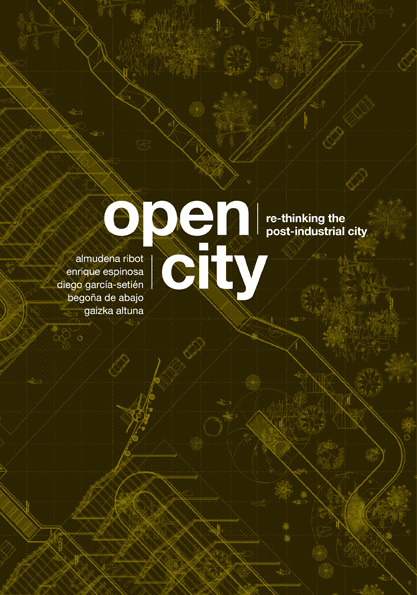
Post DomestiCity
Re-thinking urban obsolescence
Diego García-Setién, Enrique Espinosa, Begoña de Abajo, Almudena Ribot / CoLaboratorio
PostDomestiCity is an inquiry and speculative exercise into the conditions of obsolescence in the post-industrial city, from a contemporary perspective. Working with three paradigmatic cases that were conceived from industrial logics—the Packard plant in Detroit, Lima’s PREVI neighbourhood, and theGrand’Mare complex in Rouen—, we explore alternative ways of reusing, reprogramming, and redensifying the built environment as alternatives to demolition. Relevant voices in the field of architecture share their approaches and visions of the future for the pre-existing city, helping us imagine post-domesticity in the current climate crisis and socio-technological context. PostDomestiCity, along with Open Building 2.0 (CoLab, 2018) and OpenCity (Actar, 2020), forms another trilogy by CoLaboratorio, approaching and understanding architecture as a resilient support with enormous transformative potential over time.
With Contributions of
Anne Lacaton, Marina Otero, Ippolito Pestellini, Duplex Architects, Lacol, Antonio Vázquez de Castro, Carmen Espegel, Luis
29,00€
Buy Ebook 
Domesticidad a la Intemperie (SP ED.)
Sobre las relaciones entre árboles, arquitectura y habitantes
Ricardo Devesa
The first part of this publication is to present a collection of exemplary five houses that evinced explicit relationships with preexisting trees. The five twentieth century projects are: La Casa (B. Rudofsky, 1969), Cottage Caesar (M. Breuer, 1951), Ville La Roche (Le Corbusier & P. Jeanneret, 1923), Villa Pepa (J. Navarro Baldeweg, 1994) and Hexenhaus (A. & P. Smithson, 1984-2002). The second part of the book is to contribute with three theoretical concerns for the contemporary project, those ones which are established in the process, with respect to time, place and outdoor domesticity in modern western housing.
One of these theoretical contributions establishes that any house located on a site finds a significant place in conjunction with the preexisting trees. The second contribution describes the effects in terms of time, in addition to spatial considerations, which trees can contribute to the architectural project.
32,00€
Buy Ebook 
Outdoor Domesticity (ENG ED.)
On the Relationships between Trees, Architecture, and Inhabitants
Ricardo Devesa
The first part of this publication is to present a collection of exemplary five houses that evinced explicit relationships with preexisting trees. The five twentieth century projects are: La Casa (B. Rudofsky, 1969), Cottage Caesar (M. Breuer, 1951), Ville La Roche (Le Corbusier & P. Jeanneret, 1923), Villa Pepa (J. Navarro Baldeweg, 1994) and Hexenhaus (A. & P. Smithson, 1984-2002). The second part of the book is to contribute with three theoretical concerns for the contemporary project, those ones which are established in the process, with respect to time, place and outdoor domesticity in modern western housing.
One of these theoretical contributions establishes that any house located on a site finds a significant place in conjunction with the preexisting trees. The second contribution describes the effects in terms of time, in addition to spatial considerations, which trees can contribute to the architectural project.
32,00€
Buy Ebook 






